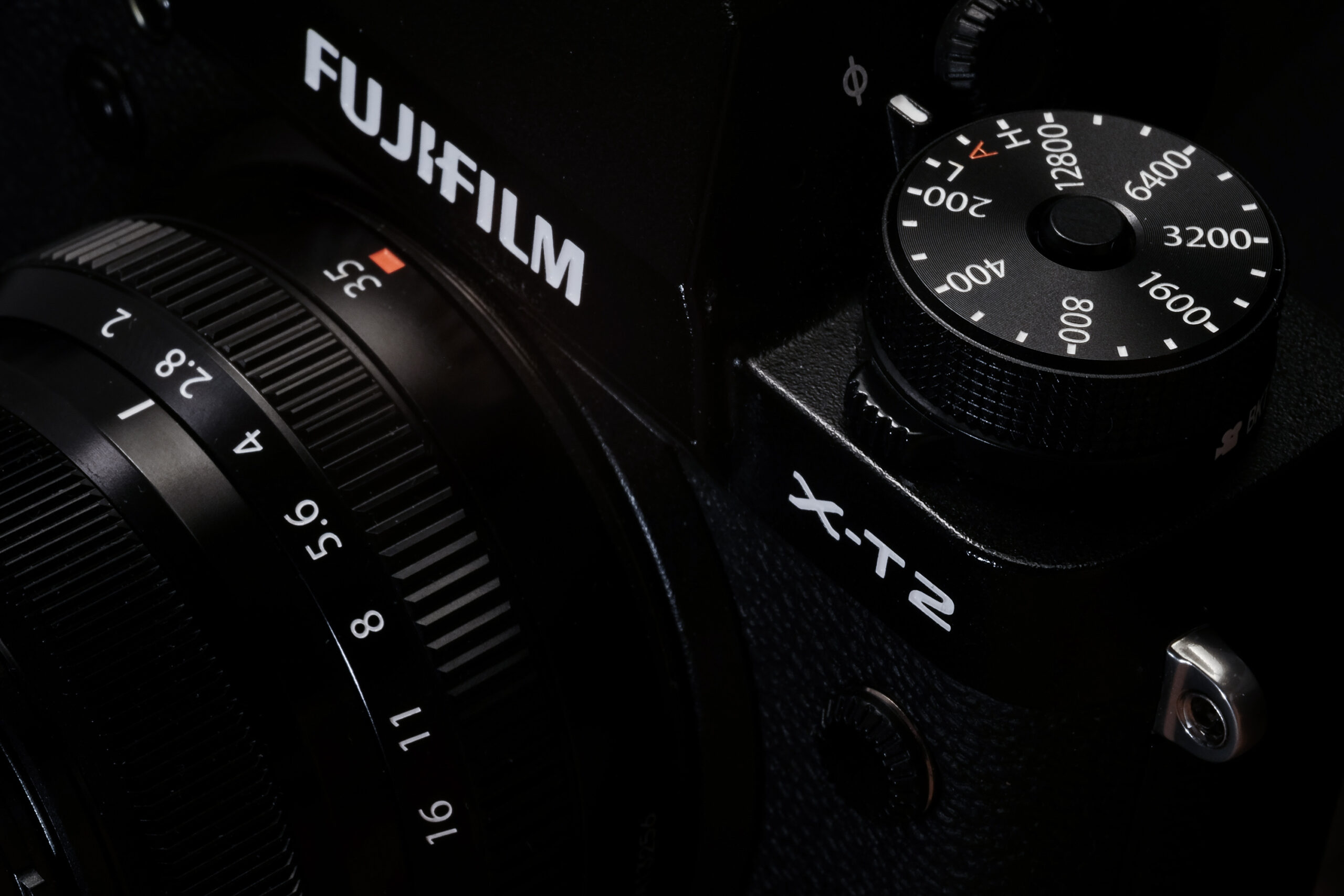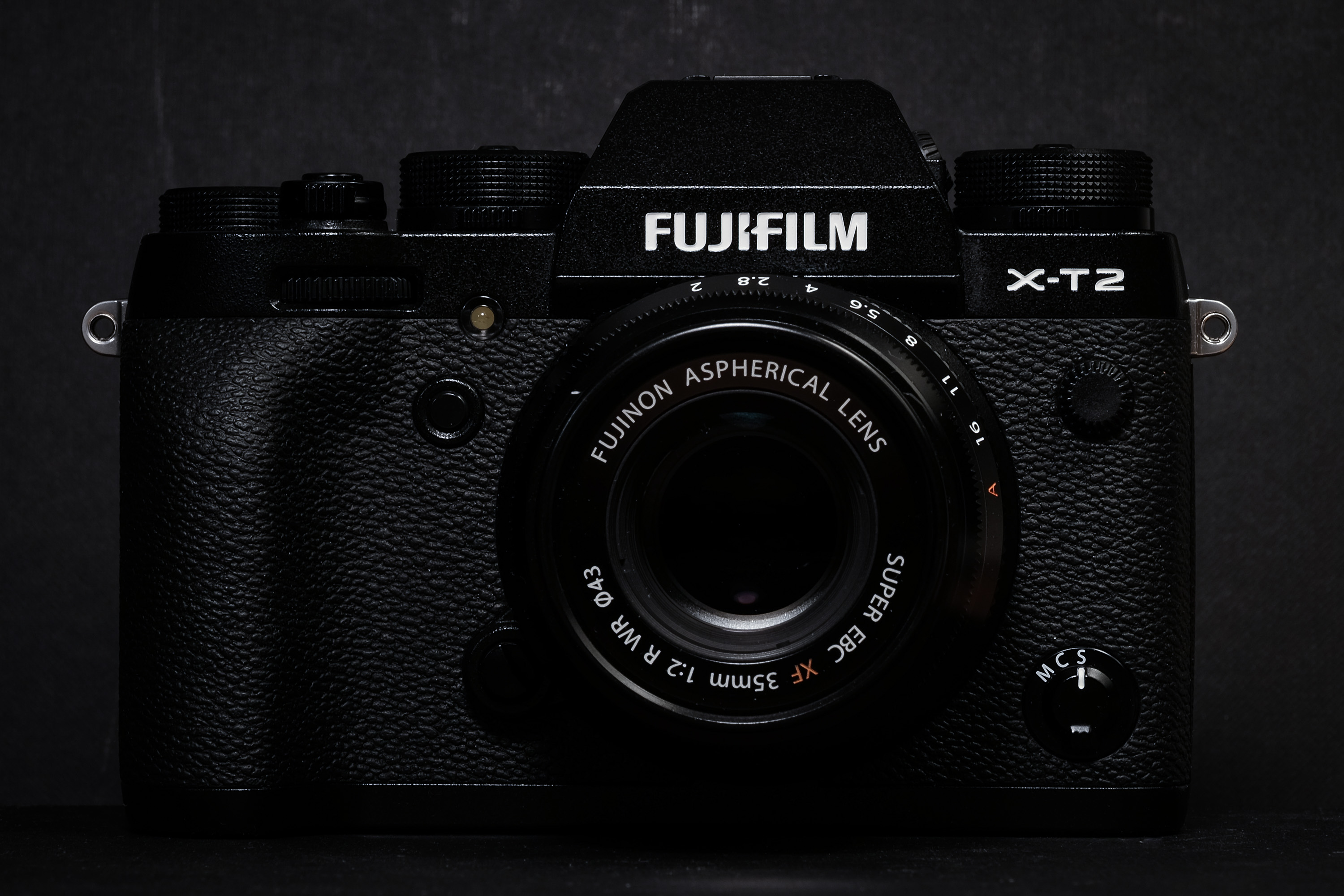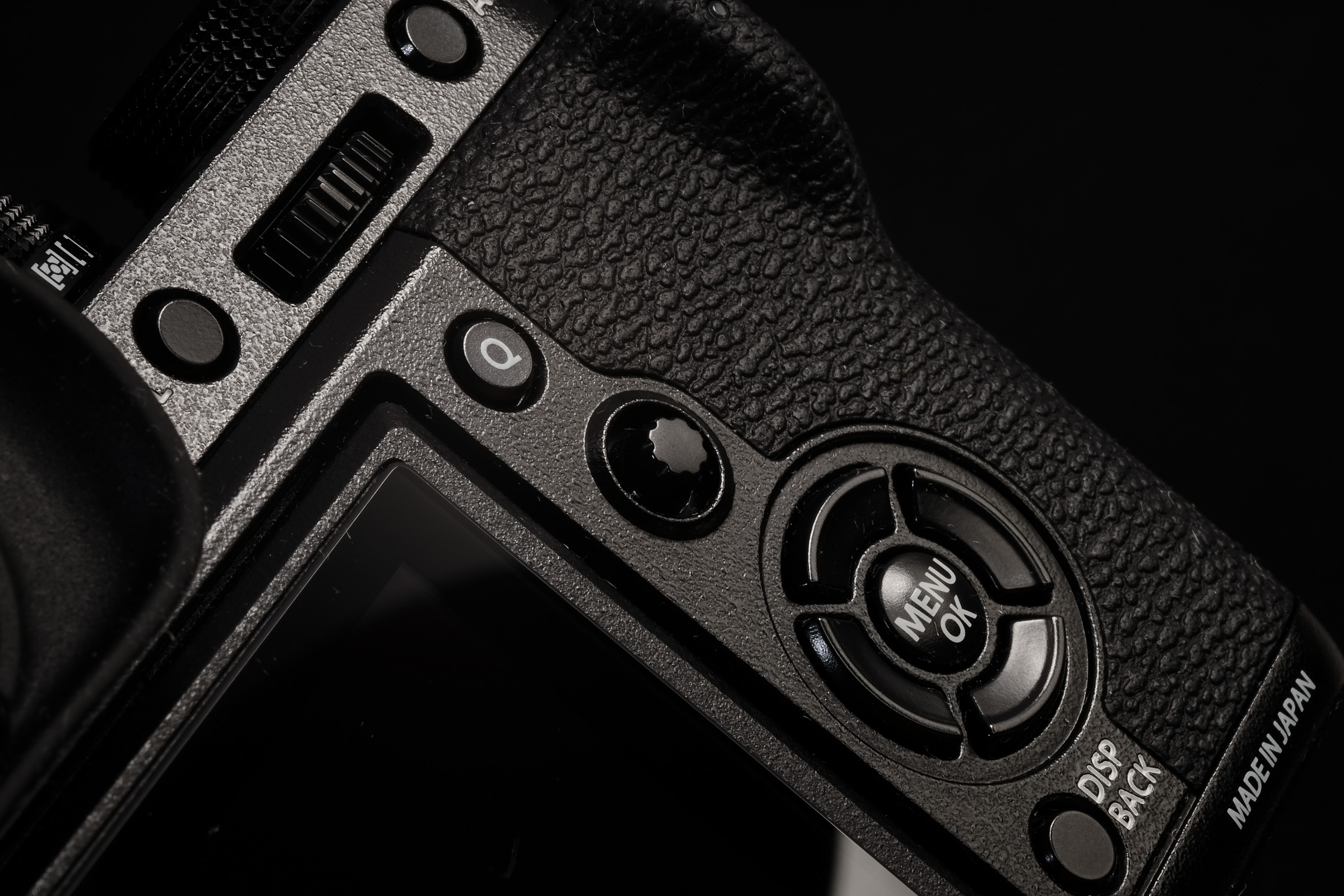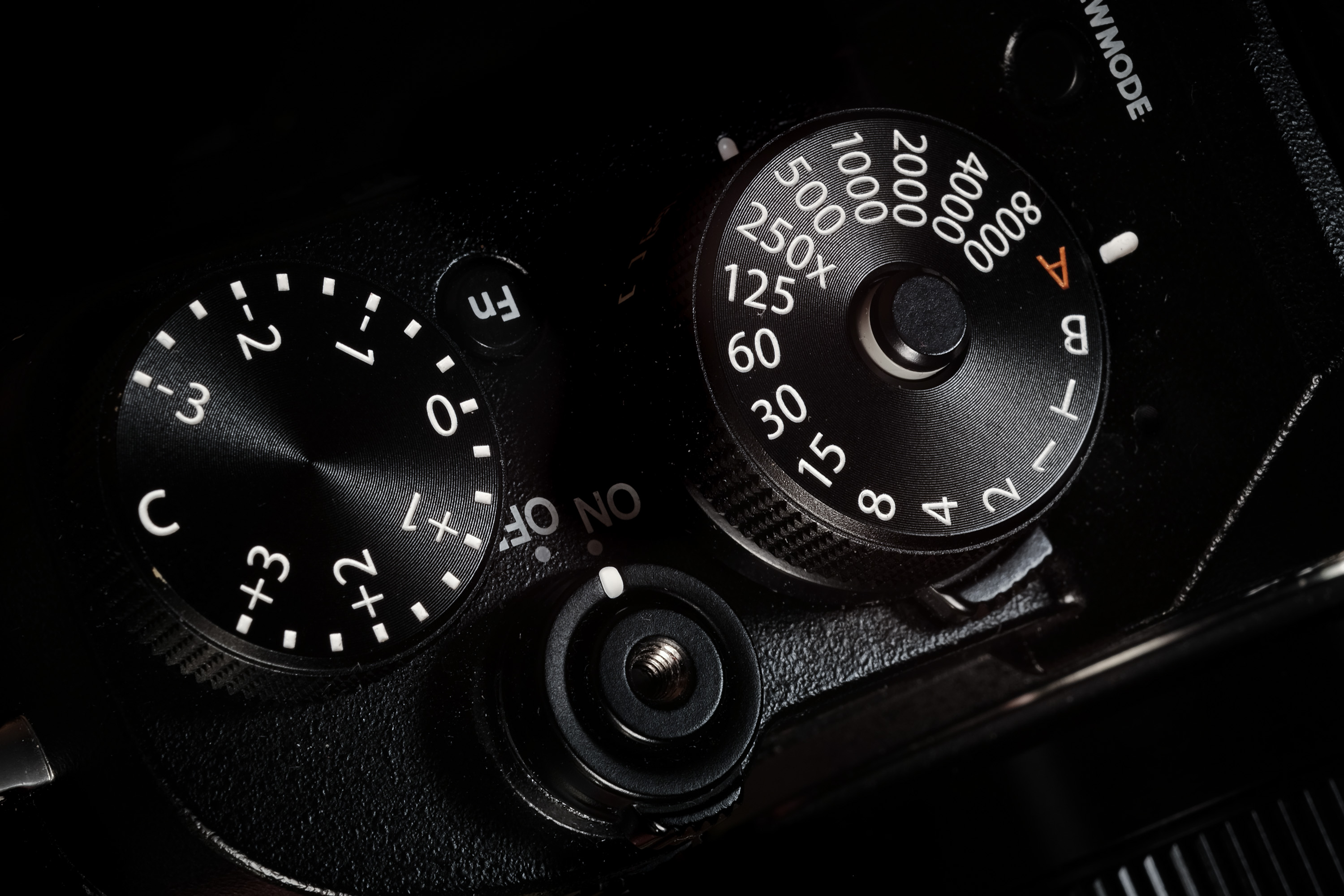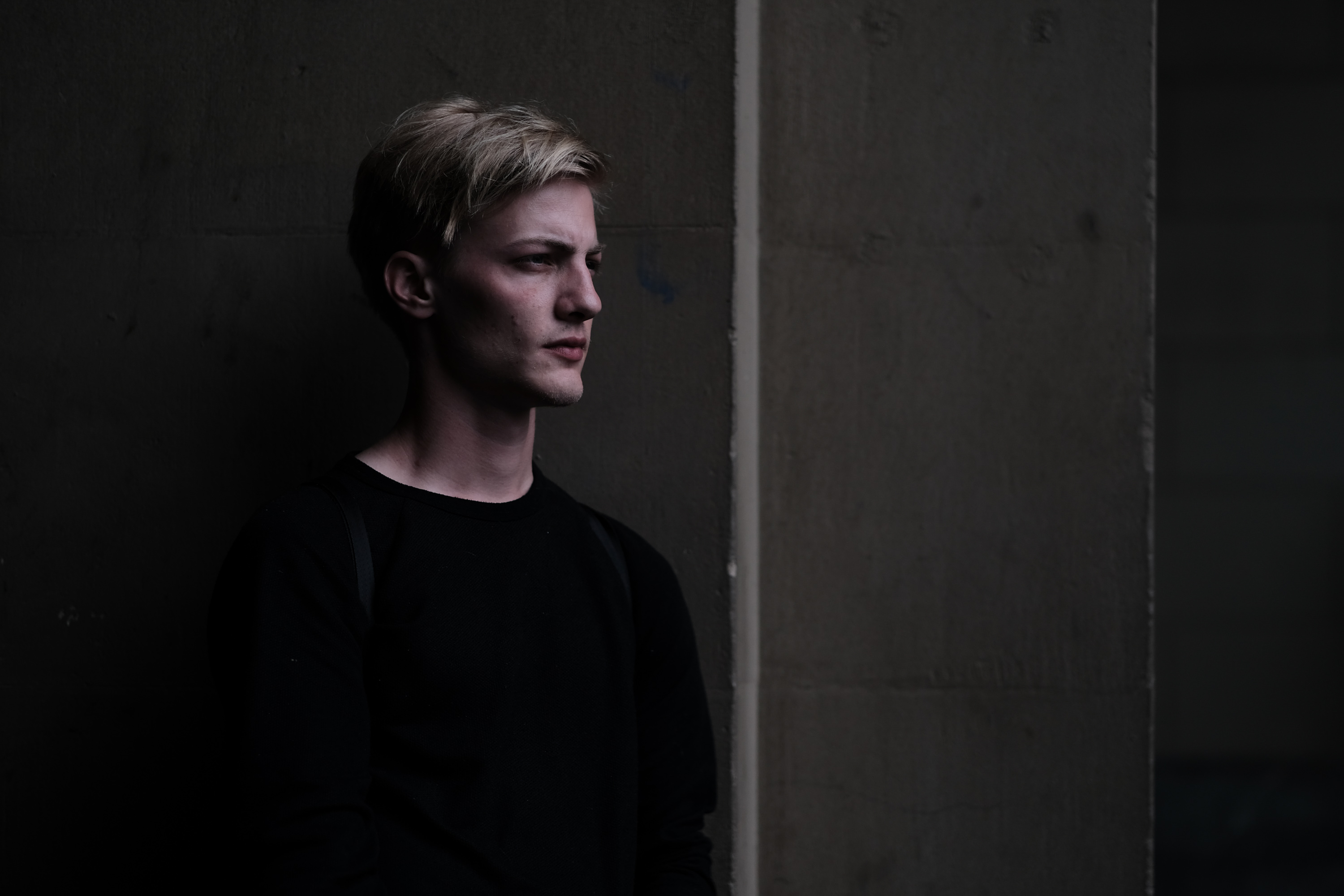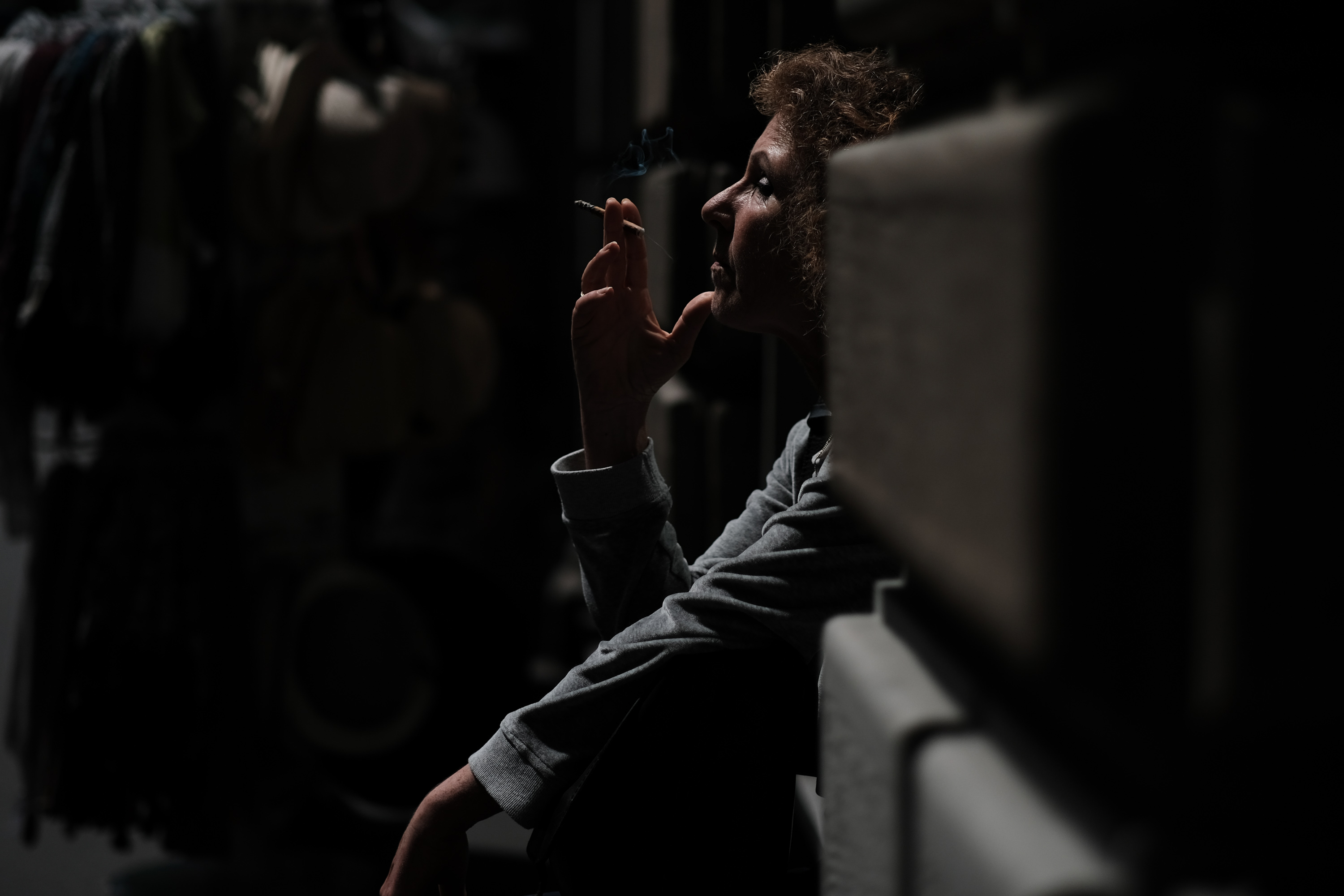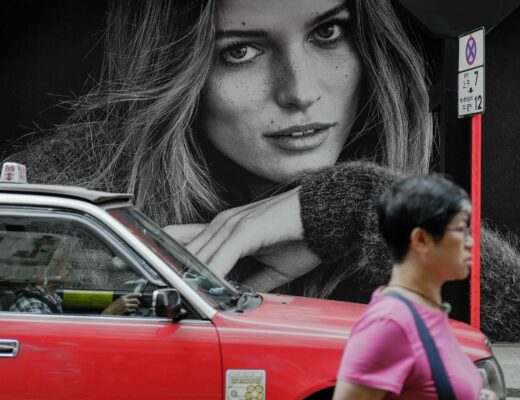As a street photographer, I have always favored the X-T1 over the X-Pro1 and the X-Pro2. I prefer the extended direct controls, a slightly smaller body and the articulating screen. Like all Fujis, once you have the camera set up the way you want it, there is barely need to go back to the menu again. This allows me to concentrate on shooting rather than dealing with settings. The additional drive and metering mode dials on the XT-1 further make the menu obsolete while shooting. A hybrid viewfinder never really mattered to me but I definitely appreciate the amazing EVF on the X-T1. Also, the articulating screen is an absolute key feature to me. I often use it to shoot in a Rolleiflex top down style shooting mode. In general, I believe in a pragmatic approach to photography. Use the right tool for the job enabling you to shoot the way you want. Whatever your shooting style might be, it’s about getting the shot. This is especially true for street photography as nothing is staged or can be recreated. Get it or it’s gone. So the stakes are high when you choose a camera to fit your personal style of street photography.
This is a review of the Fuji X-T2 for street style photography. I don’t focus on diagrams, technical analysis or charts. I let the experts do that.
For many of us, the waiting game began with the release of the X-Pro2 earlier this year. We were hoping the X-T2 would come with a set of upgrades and improvements similar to the ones that got us excited about the X-Pro2. Thanks to the amazing folks at Fujifilm I spent the last week shooting with a pre-production model of the X-T2. It’s hands on with the brand new Fuji X-T2. So let’s get started!
Picking up the X-T2, you immediately feel at home. In fact, at first sight you might mistake it for the X-T1 – until you discover the numerous subtle improvements all around the weather and dust resistant alloy body. Fuji’s camera model evolution considers that most X-T1 users were more than happy with the design and layout of the camera. The X-T1 is an amazing camera in terms of ergonomics and handling, so there was no need for a revolution.
On the outside, the X-T2 has grown a few millimeters in every direction. This suits it well and improves the overall grip when operating the camera, without making it look or feel any bulkier. It still remains a very small discreet and versatile street camera. Without a direct comparison the slight increase in size would not be noticed.
Aiming to be quick on the streets, I very much rely on the direct controls. I use them primarily to work with the camera and to react to changing circumstances. The main top dials have gained a few millimeters in height and use a lock/unlock mechanism, which is operated by pressing the middle button. The shutter and ISO dials can be released and locked back into place without having to apply constant pressure to the body while turning them. The exposure compensation dial has moved a few millimeters away from the edge of the body and is slightly firmer to turn, making it less likely to have to deal with unwanted setting changes.
As many Fuji users, I have experienced a few issues with the body cover and the doors in the past. On all X-T1 bodies I own the doors are bending and the cover has started to come off at the edges. It feels like the material has been improved and hopefully will stand the test of time, heat and weather. The cover is slightly less rubbery, stiffer and seems to be better integrated into the body compared to the X-T1. The camera feels very solid. The integrated thumb grip has moved to the right and is now aligned with the top-plate. This looks cleaner and feels better to me, improving the grip when walking in the streets.
The buttons, especially the d-pad on the back, are less recessed and generally give more tactile feedback when in use. The tripod mount is now centered, something I do not use often but which still makes life easier. Overall, the quality build feels excellent – as we would expect from Fuji. Holding the camera just feels right.
And yes, there it is, the joystick. This is one of the most anticipated features of the X-Pro2 I was hoping to find in the X-T2. It is an awesome addition to the camera. Shooting in the streets, time is a key element. I anticipate the frame and set the focus point way before lifting my camera. On the X-T1, you had to press the d-pad at least twice to move your focus point. Now, you immediately move it in any direction with the joystick. This is faster, more intuitive and gives you just that little bit of extra time to help get the shot. If, before taking a shot, you are unsure of where you last set your focus point, a double click will set it back to the default position. In playback mode, the joystick allows you to move within your image. Press it once to zoom out of the image and press it twice to switch memory cards. This improves the overall workflow and efficiency of the camera.
On the downside, I would have positioned the joystick more to the right. Using a rangefinder style camera like the X-Pro2, the joystick does not get in your way as it is off-center. If you are a left eye shooter like me, the joystick on the X-T2 sits exactly where your nose is, making it a bit tight to operate it freely without your finger starting a fight with your nose. In a future firmware update it would be great to be able to adjust the speed of the joystick to your personal liking. Equally, I would appreciate an option to pre-program a few positions across the focus point grid.
As expected, the AF performs significantly better than on the X-T1. I was unable to determine whether there has been another performance bump in comparison to the X-Pro2. It is definitely snappier and more precise than on the X-T1. Almost half of the frame is now covered with phase detect AF points. If you are a zone focus or hyper-focal street shooter, this may be irrelevant, but for those like me who use AF this is a great improvement. As I often shoot wide open, precise focus is definitely important to me.
Fuji also brought back the soft release shutter thread, which I love on the X100s and the X-Pro1. It is so much easier to operate the shutter without having to point the tip of your finger straight at it, giving you just a bit more stealth on the street. The shutter is positioned slightly higher compared to the X-T1 and has a larger surface on the on/off switch. It feels solid, yet discreet – and, speaking of stealth: it is very quiet. You can get really close before being heard. If you want to go into full stealth, switch to the electronic shutter, which is absolutely silent. It allows shutter speeds of up to 1/32,000s. The mechanical focal plane shutter allows shutter speeds of up to 1/8000s and flash sync of up to 1/250s.
The EVF on the X-T2 is stunning, sporting 2.36 million dots and a refresh rate of 60fps in normal mode and 100fps in boost mode. In direct comparison with the X-Pro2 and the X-T1, the X-T2 viewfinder looks better to me. The EVF specs are identical on both cameras; the refresh rate and the magnification make the X-T2’s EVF very impressive. I barely notice any lag when using it, making it very efficient in difficult light. This EVF makes you want to use it because it simply looks gorgeous. If you liked the EVF on the X-T1, this one will definitely blow you away.
One of the main reasons why many of us waited for the X-T2 instead of going for the X-Pro2 was the absence of a tilt screen. I perfectly understand why Fuji made this choice when it came to the evolution of the X-Pro series but many did not want to shoot without that feature. Once you get used to the advantages of a flip screen, it just gives you more options for creative and stealth shooting. I still prefer to decide for myself whether I want to use it or not as opposed to limiting myself by not having an articulating screen at all. Having said that, the screen on the X-T2 looks great. It comes with 1.62 million dots within 3 inches of screen real estate. The screen now tilts in three directions, up and down in landscape and upwards by about 45 degrees when shooting in portrait mode. This is certainly useful for landscape and portrait shooters when using the camera in portrait orientation. I would have liked it to flip out 90 degrees, which would have made it more versatile for street shooting.
The X-T2 has the same Dual Card slot as the X-Pro2, with the difference that both SD card slots support the UHS-II standard. The door is now equipped with a locking mechanism that prevents from accidentally sliding it open. You can operate your cards in three different modes: in sequence, as a 1:1 backup of your primary card or splitting the jpeg and raw files on two different SD cards. The 1:1 backup in particular gives you a slight advantage when shooting on the street. Let’s say you just captured „the shot“ and the circumstances force you to delete it. Well, you go ahead and delete it, but the backup remains on your second card. This comes in very handy when you want to keep that shot for whatever reason. I noticed the X-T2 does not automatically recognize a change of card slots. Shooting with one card in Slot 1 and switching it to Slot 2 leads the X-T2 to complain about not having an SD card. This might be due to it being a pre-production model and could certainly be addressed in a firmware update.
For test reasons I played with the continuous modes high and low to see how the cards perform in the different modes. The speed does not differ in raw/jpeg split and sequence. Shooting jpeg fine and raw gives you about four to five seconds full speed until the camera slows down the image rate. Shooting jpegs only, you can easily fill an SD card without any speed loss.
I will not get into the new sensor and processor here as the X-T2 sports the same basic interior technology as the X-Pro2. There have been numerous reviews on the new Fuji 24 Megapixel X-Trans III sensor and the X-Processor Pro. I encourage you to look at those if you are interested in further technical details. I was always content with the 16MP sensor but once I looked at the files the new 24MP sensor produces I did not feel like going back. Details, dynamic range and rendition are impressive. This is great given that we get 50% more pixels without gain in image noise. As this is a pre-production model of the X-T2, I cannot show you any RAW files or high-resolution images. But the images I captured during the last week have me very excited to shoot more with this camera.
The outstanding ISO performance of Fuji mirrorless cameras is one of the features that got me attracted to the Fuji X-System in the first place. Being able to comfortably shoot up to ISO 6400 with the X-T1 and keep the shutter speed at a minimum of 1/125s is a great advantage in street shooting. Combine this with the wide aperture XF lenses and you will capture amazing images in very low light. I love shooting outside at night and found myself using high ISO more often than I had first anticipated. This aspect has further improved with the X-T2. Images at ISO 12800 do show noise but are usable if you have no other choice than to up the ISO. Having said that, I will stick to 6400 as a maximum value as I prefer to not take the risk. But it is nice to know that the X-T2 provides usable headroom if needed.
We also get the new menu functions, look and feel with the X-T2. It looks clear and very understandable to me. The main addition I am excited about is the “MY” menu function: this allows you to compile your main settings in a single top-menu point. Otherwise, I don’t really use the menu after the initial setup. Both the X-T1 and the X-T2 thankfully allow me to ignore the menu and to operate the camera solely through the direct exterior controls. It is also worth mentioning that the beautiful Acros film simulation is now available in the X-T2.
As expected from Fuji, we can still use the same batteries as for the X-Pro and X-T series. For a full day of street shooting I usually leave the house with at least three to four batteries. Older handgrips won’t fit anymore as the body size has slightly increased. Fuji will release a vertical grip which will also have a second joystick integrated and provides room for two additional batteries, giving you a total of three batteries to feed the camera’s still remarkable hunger for energy. I will add the metal handgrip with the integrated Arca Swiss plate as soon as it is available. Battery life should remain the same as what we already know from the X-Series: an average of 300 to 350 shots per battery during normal use. Battery life will certainly decrease when using the boost mode. You can now switch directly between using the normal and boost mode by using the d-pad controls, keeping you battery consumption reasonably low if you like.
Of course you can customize all buttons through the menu. The fact that I can set the camera to my liking makes me a faster shooter. It’s worth mentioning that the front wheel is now clickable as well. The metering mode control now features the fourth metering mode “center-weighted”. I do not use face recognition but for the sake of testing I gave it a shot. I quickly turned away from it when I realized that the face detection and the spot-metering mode don’t really get along very well.
Oh, and the X-T2 is the first X-Series camera that does up to 30min 4k video recording. I am unlikely to ever use it, but I am very happy to see that the video button has disappeared from the top-plate next to the shutter and is now integrated into the drive control, which gives the camera a much cleaner look.
Are there any downsides? To me, not really aside the points of improvement I mentioned throughout this review. Nothing major. And as we know, Fuji does listen to user feedback and turns it into additional features in future firmware releases. Speaking of firmware, please, Fuji, give us a function that allows us to save and re-upload camera configurations. That would make life much easier.
I really love my X-T1`s and until now I had not seen a worthy replacement. Unfortunately for them, there is a new sheriff in town. The X-T2 is just an all around better camera. Shooting with the X-T2 reminded me of why I chose Fuji cameras in the first place. It’s more of the good stuff. The kind of stuff that makes me want to shoot more. Yes, that may be unscientific, but in the end it is emotion that drives me to take pictures and emotion I seek to capture in images. If my camera fuels that feeling then that is exactly what I am looking for.
If you own an X-T1, is it worth the upgrade? If you are happy with the X-T1 and you have never felt you reached the limits of the camera, maybe not. But if you have been using the X-T1 to its limits and found yourself in situations where you wished the performance would give you a bit more, then the X-T2 will be the camera for you. If you had the chance to test the X-Pro2 during the last six months and you wished your X-T1 would perform equally or better, then you should not hesitate. After all, this will be the go-to X-T for the next years.
I am really excited to start shooting with it when the production models roll out. For now, the X-T2 goes back to Fujifilm, giving my two X-T1s a bit more time until we part ways and they go to sit on the shelf with all my other former favorite Fuji`s. Looking forward!

